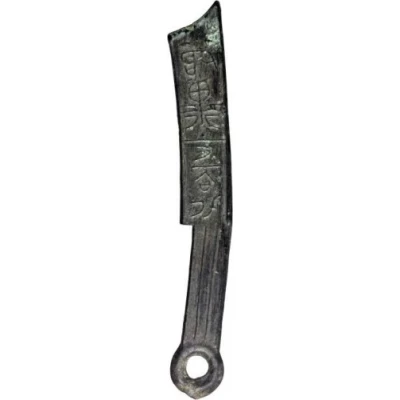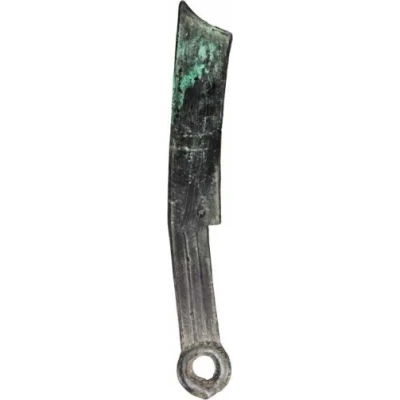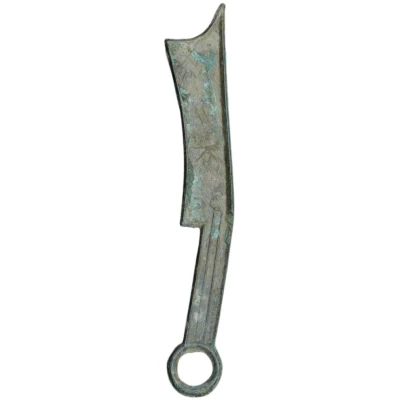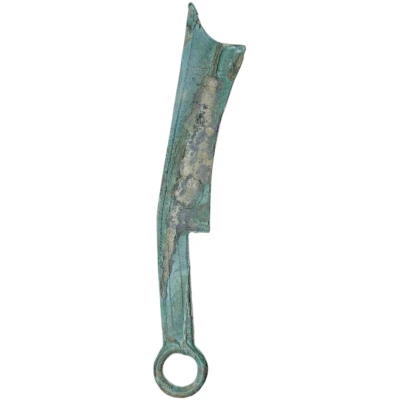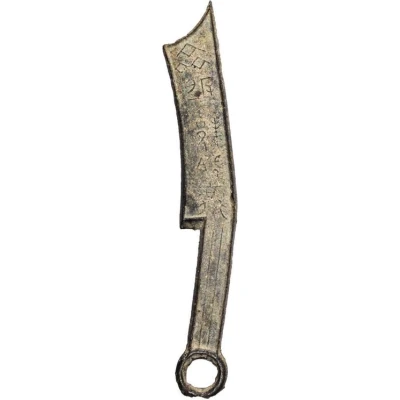
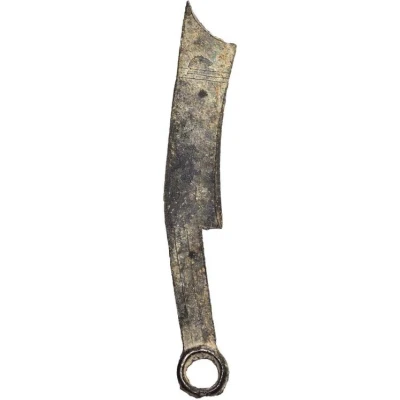

© Stacks Bowers
Qi knife Qi Jian Zao Bang Chang Fa Hua 401 BC - 220 BC
| Bronze | 49.36 g | 179 mm |
| Issuer | State of Qi (Warring States) |
|---|---|
| Type | Standard circulation coin |
| Years | 401 BC - 220 BC |
| Currency | Knife money (401-220 BC) |
| Composition | Bronze |
| Weight | 49.36 g |
| Diameter | 179 mm |
| Shape | Knife |
| Technique | Cast |
| Orientation | Medal alignment ↑↑ |
| Demonetized | Yes |
| Updated | 2024-10-09 |
| Numista | N#272807 |
|---|---|
| Rarity index | 95% |
Reverse
One Chinese ideogram on the blade with three horizontal lines near the tip.
Script: Chinese
Lettering: 化
Translation: Hua
Edge
Plain
Comment
These are attributed to the State of Qi, and are largely found in the Shandong area. While the characters on the obverse are constant, those on the reverse have a lot of variations.There are many interpretations of the obverse legend, with the given translation being the literal meaning.
Interesting fact
One interesting fact about the Qi knife coin is that it was used as a form of currency during the Warring States period in ancient China, and it was also used as a weapon for self-defense. The coin's design features a knife-like shape, which gave it its name "Qi Jian Zao Bang Chang Fa Hua," which translates to "Qi knife with a square handle and a circular blade." This unique design made it both a practical tool and a symbol of wealth and power.
